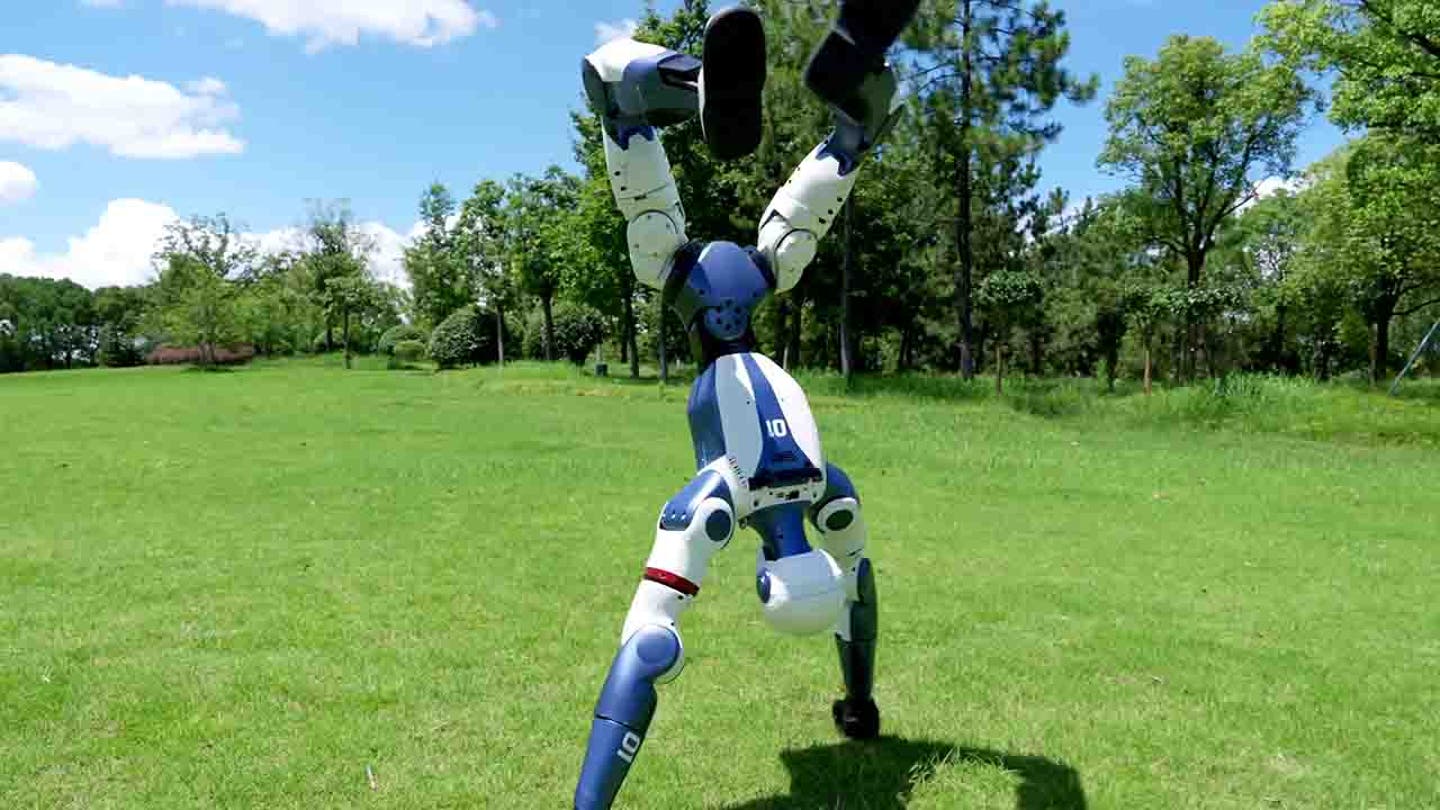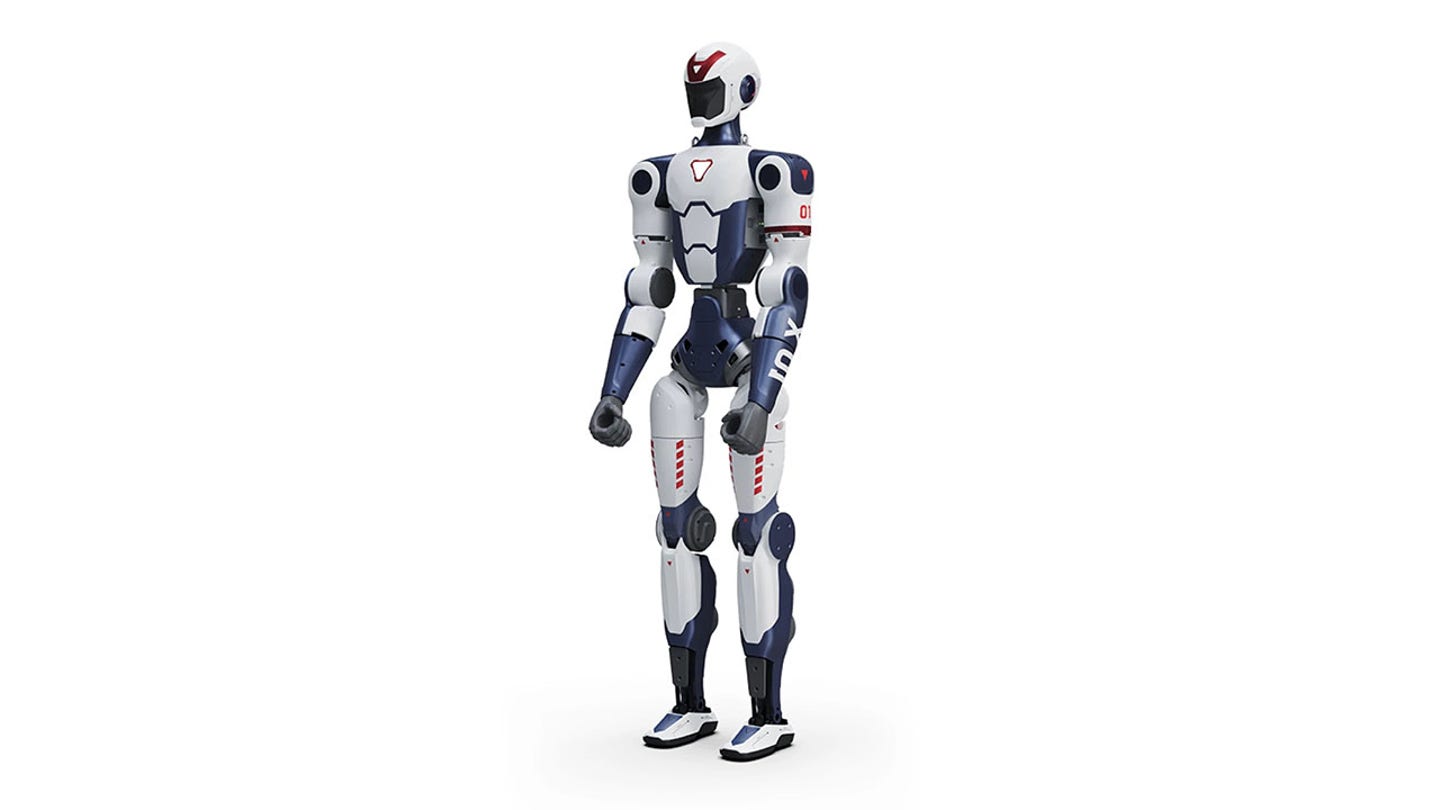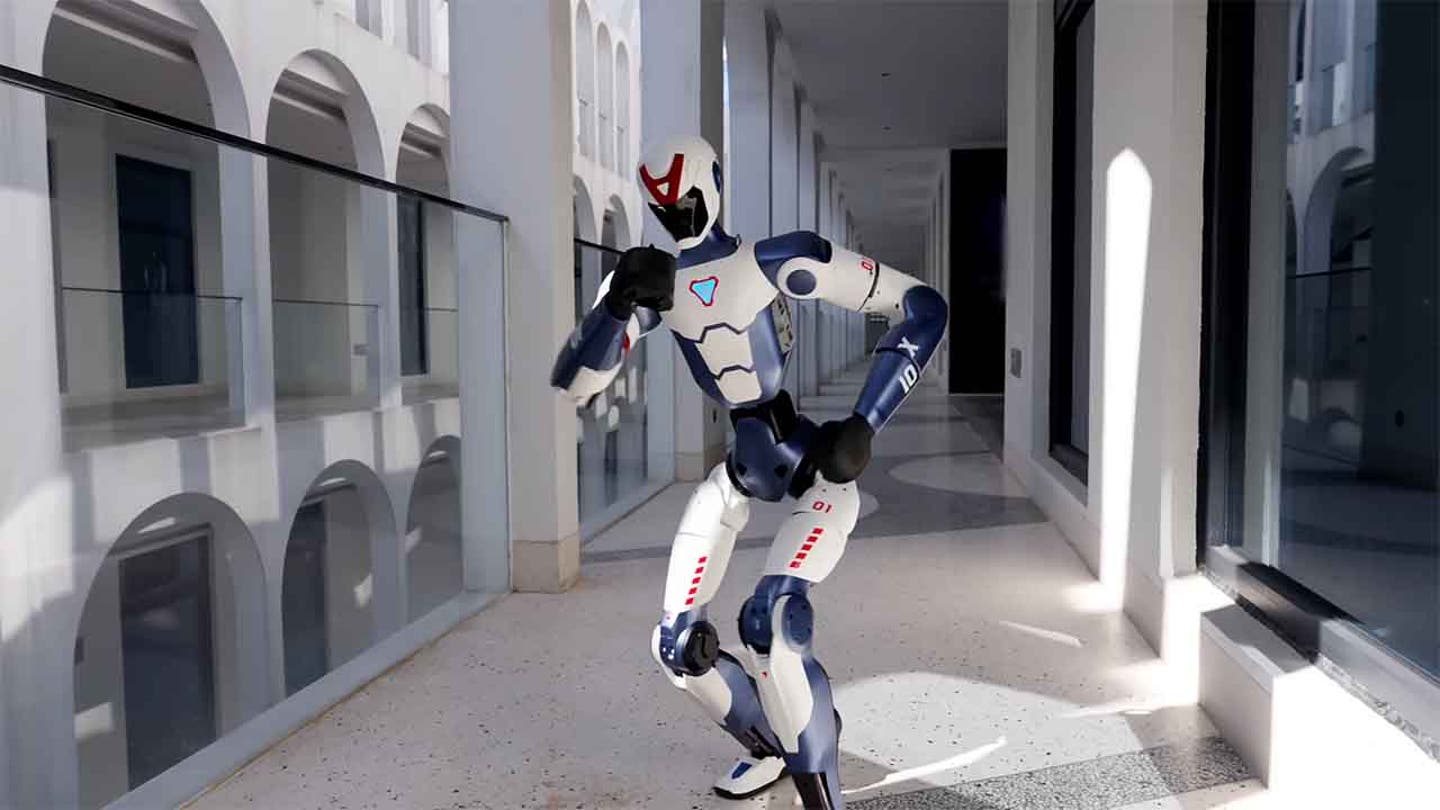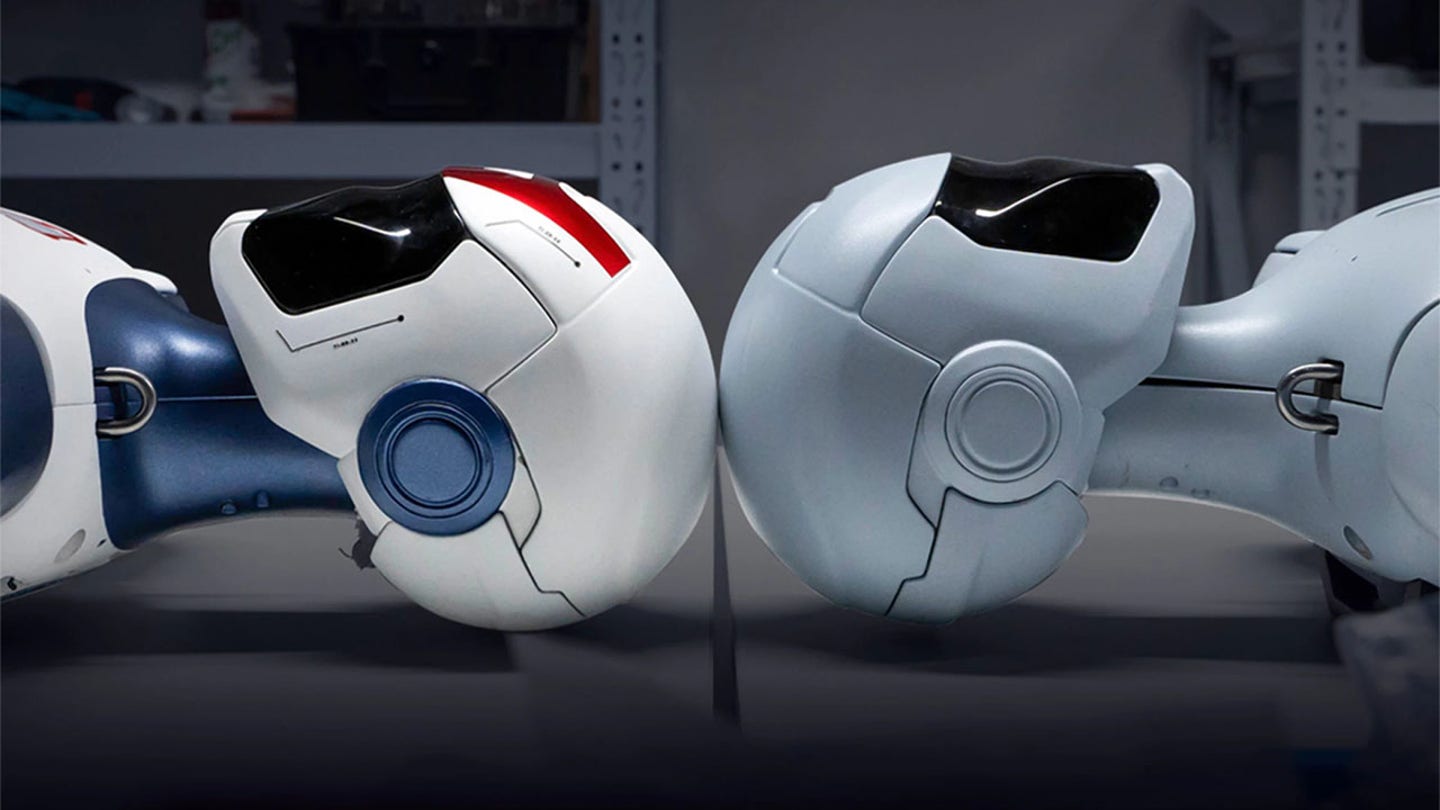NEWYou now have the option to listen to articles from various sources!
Unitree has unveiled its latest innovation, the R1 humanoid robot, sparking conversations across the tech community. Priced at just $5,900, it is currently the most cost-effective bipedal robot available in the market.
The surprisingly low price has generated excitement and interest, signaling a significant advancement in making humanoid robots more accessible to a wider audience.
Sign up for the FREE CyberGuy Report
Receive top tech tips, crucial security alerts, and exclusive deals directly to your inbox. Additionally, gain access to the Ultimate Scam Survival Guide for free when you sign up for the CYBERGUY.COM/NEWSLETTER.
HUMANOID ROBOT SWAPS ITS OWN BATTERY TO WORK 24/7
R1 humanoid robot. (Unitree)
Unitree R1 showcases agility in promotional videos
The R1, featured in Unitree’s promotional videos, impresses viewers with its running, spinning, shadowboxing, handstands, and cartwheels. The advancements in coordination and agility of humanoid robots are becoming more apparent, with the R1 being a feasible option even for regular consumers.

R1 humanoid robot performing a handstand. (Unitree)
Key Features of Unitree R1: Flexibility, sensors, and EDU upgrade
The R1’s impressive movements are made possible by its 26 joint degrees of freedom, offering flexibility akin to that of a gymnast. Equipped with onboard sensors such as binocular and wide-angle cameras, microphones, and speakers, the robot can effectively understand and navigate its environment. Powered by an 8-core CPU and GPU, it handles tasks like voice and image recognition seamlessly. With a battery life of approximately one hour per charge, the R1 demonstrates efficiency for a robot of its size.
WHAT IS ARTIFICIAL INTELLIGENCE (AI)?
Weighing around 55 pounds and standing at about 4 feet tall, the R1’s compact size allows for easy integration into classrooms or laboratories. While the standard model features fixed open fists without the ability to grasp objects, the advanced EDU version offers movable fingers and the capacity to carry up to 6.6 pounds in each arm.

R1 humanoid robot. (Unitree)
Unitree R1: Breaking the price barrier in humanoid robotics
Compared to Unitree’s previous models priced at $16,000 for the G1 and over $90,000 for the H1, the R1 represents a significant shift. The lower price point opens up opportunities for researchers, developers, and educators to delve into humanoid robotics.
While the affordability of the R1 has garnered positive attention, some skepticism remains. Questions have been raised about the authenticity of the promotional videos, with concerns over CGI or overly scripted scenarios. Given the unpredictability of robots deviating from their intended tasks, robust software and safety mechanisms remain crucial, especially at this price range.

R1 humanoid robot in motion. (Unitree)
Potential Impact of Unitree R1 on Robotics Research and Healthcare
Observers and researchers worldwide are closely monitoring Unitree’s latest development. Leveraging China’s manufacturing expertise and cost-effective hardware, Unitree is poised to compete with U.S.-based companies like Tesla, Figure AI, and Agility Robotics in the race to make humanoid robots practical and affordable.
Some researchers have already started incorporating the R1 into academic projects, expecting seamless integration with machine learning systems and training tools from previous models. In healthcare, trials are exploring the use of humanoid robots in remote care services, although further enhancements in strength and sensitivity are required.

Two R1 humanoid robots. (Unitree)
Implications for Consumers
If you’ve ever envisioned working alongside a humanoid robot but felt it was beyond reach, the R1 changes the narrative. Priced at $5,900, it is a viable option for educators, researchers, and developers operating within budget constraints.
Capable of walking, spinning, and cartwheeling, the R1 provides a platform to explore AI and robotics projects. While the standard version lacks grasping capabilities, the EDU model offers movable fingers and enhanced functionality.
With its compact design and one-hour battery life, the R1 seamlessly fits into educational settings, research labs, or creative spaces. While not without flaws, it signifies a significant stride towards democratizing humanoid robotics.
CLICK HERE TO GET THE FOX NEWS APP
Kurt’s Insights
The Unitree R1 is gaining attention for all the right reasons. Priced at $5,900, this bipedal humanoid robot showcases speed, flexibility, and affordability, making it a game-changer for schools, researchers, and developers seeking access to cutting-edge technology at an affordable price. While its performance in real-world scenarios remains a topic of interest, the R1 has the potential to revolutionize the integration of humanoid robots into everyday life. Could humanoid robots like the R1 become commonplace in classrooms, medical facilities, or even households in the future?
How comfortable would you be with a humanoid robot sharing your living space if they become more affordable? Share your thoughts with us at Cyberguy.com/Contact.
Sign up for the FREE CyberGuy Report
Receive top tech tips, crucial security alerts, and exclusive deals directly to your inbox. Additionally, gain access to the Ultimate Scam Survival Guide for free when you sign up for the CYBERGUY.COM/NEWSLETTER.
Copyright 2025 CyberGuy.com. All rights reserved.
Kurt “CyberGuy” Knutsson is an award-winning tech journalist with a passion for technology, gadgets, and gear that enhance everyday life. Kurt contributes to Fox News & FOX Business, starting mornings on “FOX & Friends.” Have a tech query? Sign up for Kurt’s free CyberGuy Newsletter, share your thoughts, story ideas, or comments at CyberGuy.com.





